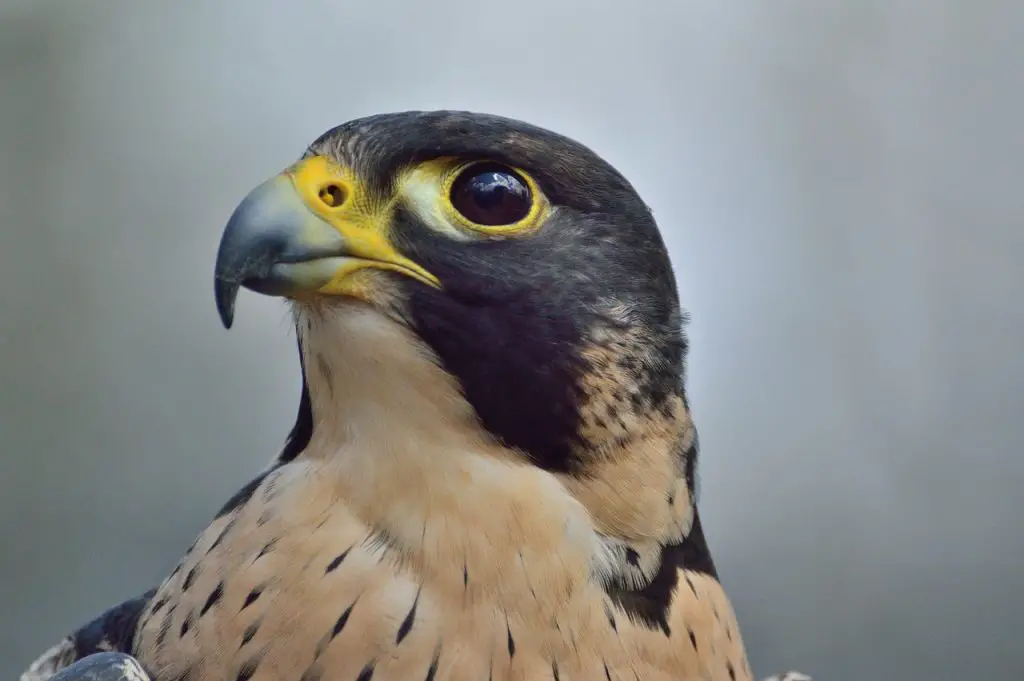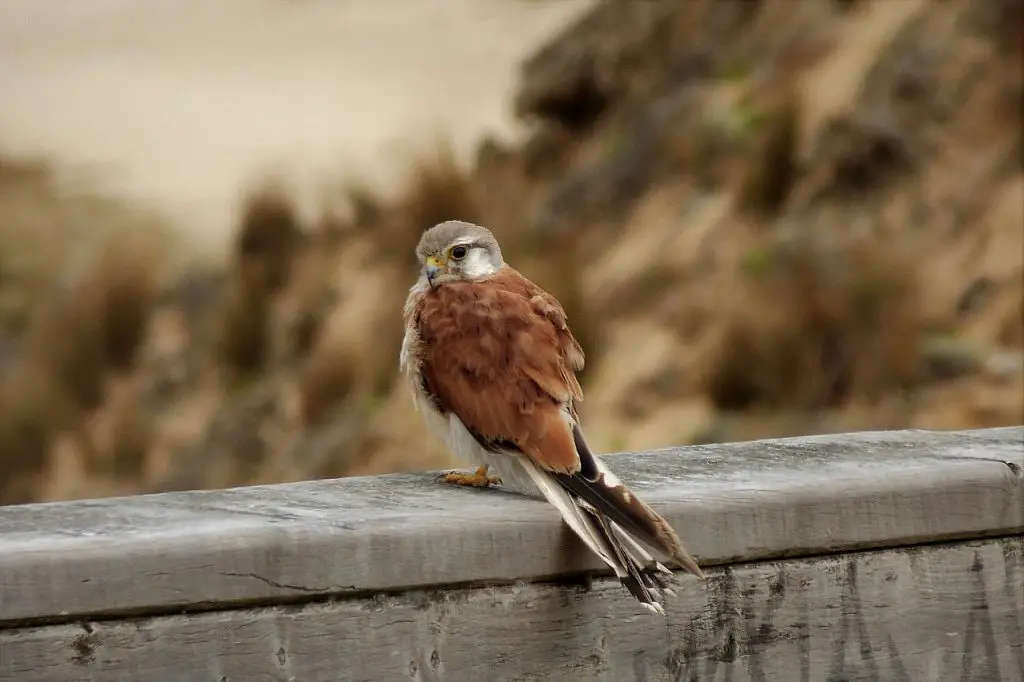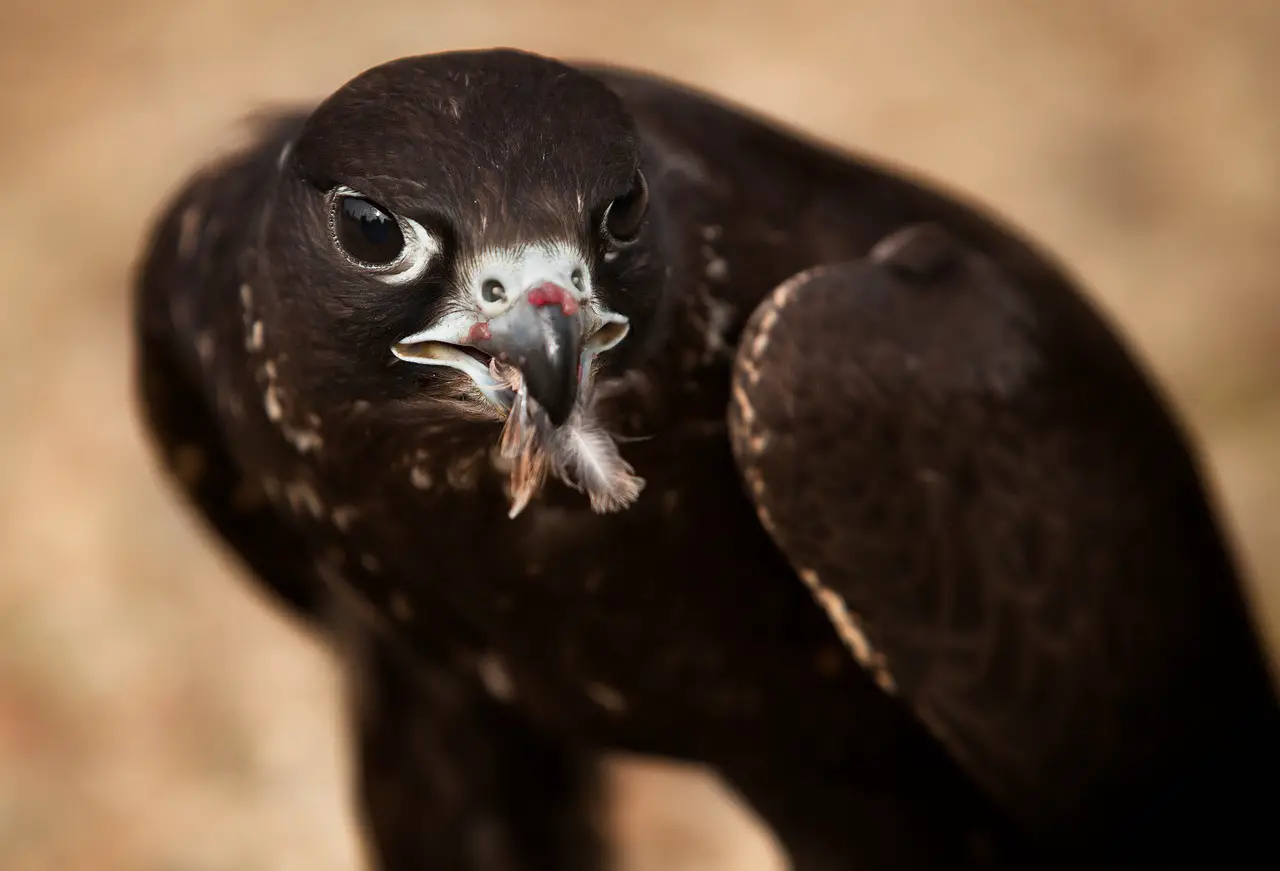To understand the ecology of falcons, it is essential to know what they eat. There have been many studies on the diet of falcons, and these show that they will eat anything, but they also have a limited number of prey that they regularly feed on. Falcons can physically kill almost any animal up to a specific size, but they will focus on some prey more than others, forming the bulk of their diet.
Falcons, including Peregrines, Merlins, Kestrels, and Hobbies all eat a wide range of food but usually specialise in feeding on a few. All falcons eat other birds, with over 50 species showing up over a period of time. However, Kestrels have the largest range and eat more mammals than birds. Hobbies catch their food in the air and eat a lot of insects late in the season.
If you want to know more about what falcons eat and how we know what they eat, please read on.
Do you know where falcons go in winter? Find out here.
How do we know what falcons eat?
Scientists have had to sift through their pellets to find out what falcons eat. Falcons regurgitate pellets of undigested food at their nests or roosts. By examining these pellets, scientists find clues to what they have been eating. However, this is only helpful if they have eaten larger quantities of feathers, bones, and fur.
Kestrels produce large pellets, and their liking for mammals allows scientists to find out what they eat. Most birds that eat other birds usually pluck the feathers before they eat them. Therefore, the small pellets do not give many clues to their diet.
Because they pluck the feathers first before eating their prey, it is possible to collect some of the feathers around the nest during the breeding season. A photo taken of the feathers from a distance can also be used without disturbing the nest.
The pellets regurgitated by Kestrels contain more varied remains than other falcons such as the Peregrine or Merlins. Merlins usually leave their pellets on bundles of hay or buildings.
When looking through owl pellets, you can normally find more remains of what they have eaten than in falcon pellets. Falcons digest their food much more, so some pellets do not contain any clues to their diet.
Although pellets are a great way to find out what falcons have been eating, they do not show up the remains of most insects and earthworms. However, the legs and jaws of some insects may show up in the pellets.
Do you know how to identify birds from their droppings? Find out in this article I wrote.

Peregrine falcon
The Peregrine falcon feeds mainly on other birds, usually between the size of a starling and a pigeon. However, they have been seen to attack geese, although this is not common. Female Peregrines are larger than males, and the birds they attack and eat are generally larger. Females can eat birds up to 1kg, while males will only eat about a fifth of this. However, this does depend on the season and the availability of food.
Peregrines’ main prey of choice is pigeons and doves. As pigeon racing has waned in popularity, these are not as easy to come by as they once were. However, they still make up to 80% of their total diet. In coastal areas, peregrines will feed on seabirds, and around moorland, they will feed on grouse.
Peregrines will also feed on the Snipe, Redshank, Lapwings, Golden Plover, Blackbird, Starling, Skylark, Song Thrush, and Meadow Pipit, although no passerine is safe.
Peregrines will also eat other raptors, including merlins, kestrels and small owls. Their diet depends on the time of the year, and as summer fades away and winter draws in, Peregrines will feed more on passerines than pigeons.
Did you know there are four species of falcon in Britain? Find out what they are here
Merlin
As one of the smaller birds of prey, Merlins still feed on other birds, but these have to be smaller. Merlins feed on many smaller birds, with some studies showing up to 50 species of bird being eaten over a few months. Most falcons have a wide range of food but specialise in one or two species.
A Merlin’s main diet is birds such as the Meadow pipit, which accounted for over half of the prey eaten in one study. Merlins like to find their food in open spaces, and so birds that live in these areas can all find themselves in danger. Skylarks, Starlings, and Meadow pipits fly over moorland and grassland and make up a large part of the Merlin’s diet.
Merlins with territory near woodlands can often be seen flying to nearby fields to find their prey, such as Horned larks and Longspurs, before returning home. Merlins can also be seen in urban areas where their diet consists of small sparrows.
Birds have some excellent ways of catching fish. Find out more here
Kestrel
Kestrels have a much wider range of prey than most other birds of prey. A Kestrels’ main diet consists of small mammals rather than other birds, although they will also feed on birds.
Kestrels can hover by flapping their wings into the wind and using their tails to hold in position. Hovering is ideal for catching small mammals, reptiles, and insects running around in open fields. Voles make up a large part of their diet, although any small mammals up to the size of a small rat will make an easy meal. Shrews are also eaten, despite their disgusting taste.
Birds, including the Meadow pipit and Skylark, make an easy meal for kestrels as they can be seen over open country and fields. Young birds born in summer often do not see winter due to Kestrels in the area.
Although most of their diet consists of small mammals, Kestrels will also feed on insects such as worms and beetles, especially in Autumn and Winter. Slow-moving insects are an easy target for young Kestrels learning how to hunt.
The pellets of Kestrels show up a varied diet with plenty of crustaceans, including crabs, along with fish and lizards.
Because kestrels have a wide distribution, their diet changes depending, with European Kestrels eating more birds, lizards, and grasshoppers, with fewer mammals. Their diet backs up their adaptability to their habitat.

Hobbies
Although Hobbies eat a wide variety of other animals like other birds of prey, they are more specialised in what they prefer. Hobbies prefer to eat other birds and are extremely fast, with speeds up to 100 km/h. As with many other raptors that eat birds, studies have shown that they can eat over 50 species of birds.
Most of their prey are small birds that are caught in mid-air. Sparrows, Tits, Finches, Swifts, Swallows, and Martins make up a large portion of their diet. Sparrows make up a large part of their diet in urban areas.
They also feed on the young of Swallows and Swifts, which they feed to their young. It has been seen in some areas that the breeding period of Hobbies is delayed to allow them easy meals with the young of Swallows and Swifts.
Hobbies will also feed on insects such as dragonflies which they find over ponds, lakes and rivers. Moths, flies, and ants are also eaten in large quantities in summer. Although they do not feed on as many mammals as other raptors, they do feed on bats, although it is unknown if they think these are other birds when they catch them.
How do birds feed without teeth? The answer may surprise you.

